Happy Labour Day? Is that how to say it? Labour Day is the unofficial last day of summer in Canada. School starts back on Tuesday and we can all notice the days getting shorter, and soon to be cooler as well. For most of us, it’s also the time when we resolve to get back to work: no more long weekends up north, back to the grind. I hope your grind is palatable. Chris and I are getting back to work: I found the audio from our drive back from Fan Expo, and Chris and I hit record while driving. I couldn’t find the recorder last week as we put it in one of the many con boxes that came back. The Audio is good enough so I’ll post it for tomorrow morning. Our goal is to not miss a week until December; let’s see.
Last week I forgot to mention I picked up a small box of cool Canadian Golden Age comics from the late 40s to early 50s; below is a nice Lone Ranger with a great cover that was in the box. I’m saving these for our next Canadiana auction which will go next spring. There are a few doubles and I’ll be putting those up for auction in the coming weeks.
Bud Plant entertains us all with his great stories and educates us with his insights and he keeps surprising me with just how prolific and hardworking he is and has been. I was posting a run of Cutey Bunny comics and wanted to check the publication date, which is where I found this. Bud, how did you get to distribute Cutey Bunny? Did these small independent publishers come to you for distribution or did you seek them out? What was the most successful title for your distribution business?
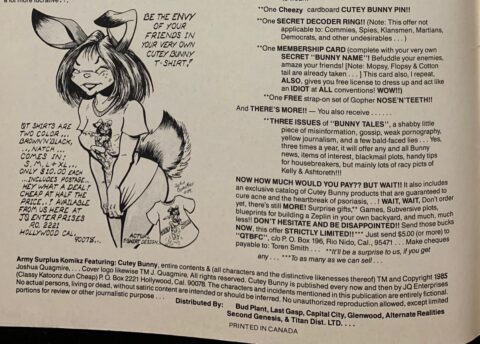
The rest of my post belongs to a book that was going to go up for auction this week until I went and fell in love with it. Hit Comics #26 features a spellbinding cover by Ruben Moreira. The cover alone was worth keeping but as I leafed through the book I discovered great splash after great splash. As I was going through this book enjoying the interior art I couldn’t help wondering what leafing through early Hangman comics must be like. Great stuff.
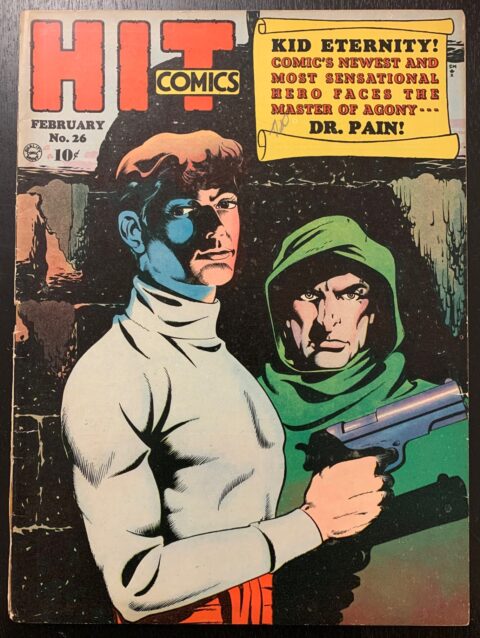
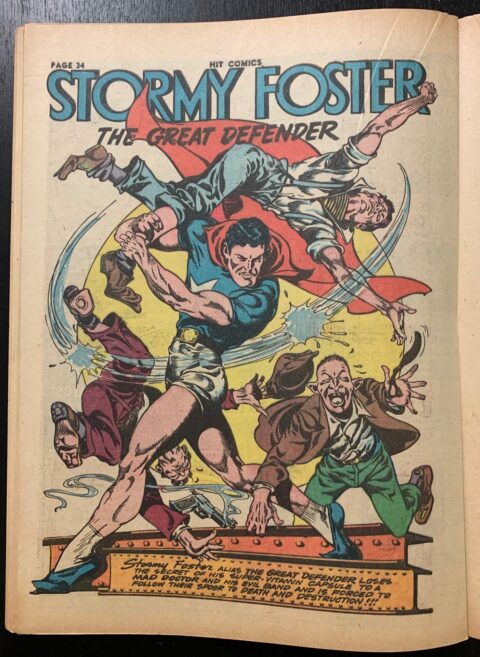
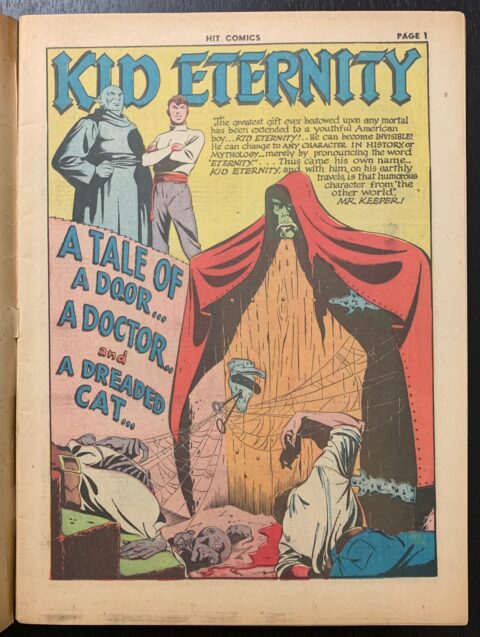
This week’s ad even comes from Hit Comics #26 with an assist from the Sandman TV series on Netflix. I enjoyed the whole series, was really well done. I found the whole Cereal Convention scene a bit over the top so when I saw the Cereal ad for Ralston Whole Wheat Cereal I knew I had to add it into the Tom Mix.
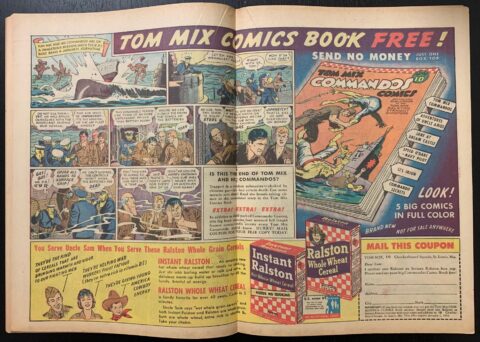
Oops, almost forgot to include a highlight from last night’s ice collectibles eBay auctions. I was impressed with the price we got for the Ghost Rider #1 to 38 set. That Ghost Rider run clogged my bargain bins for decades; nice to see some demand coming around for these books. This lot got $113.50 USD.
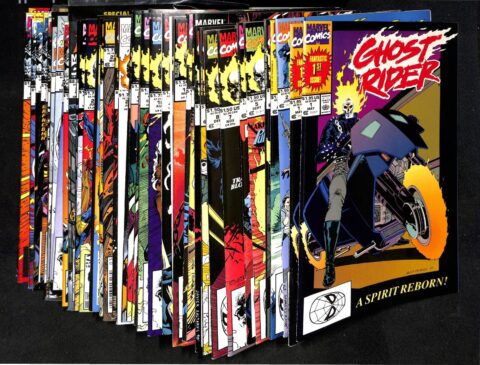

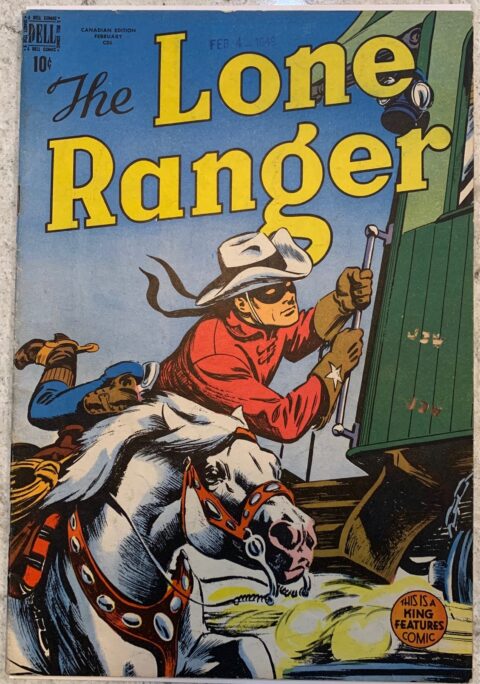
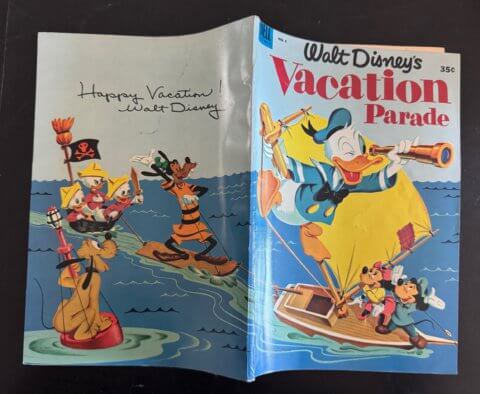
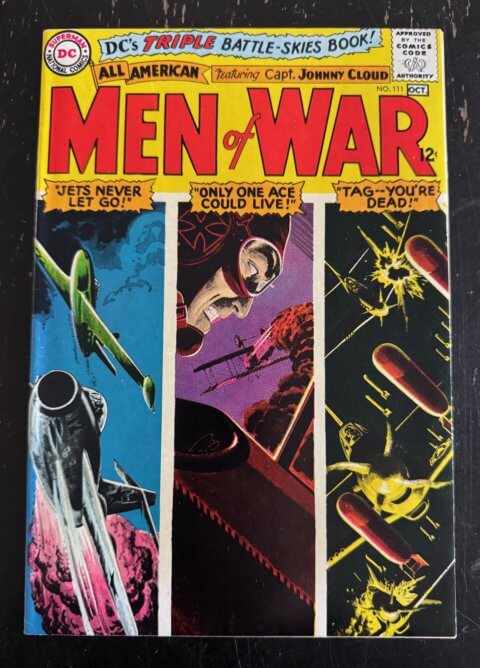
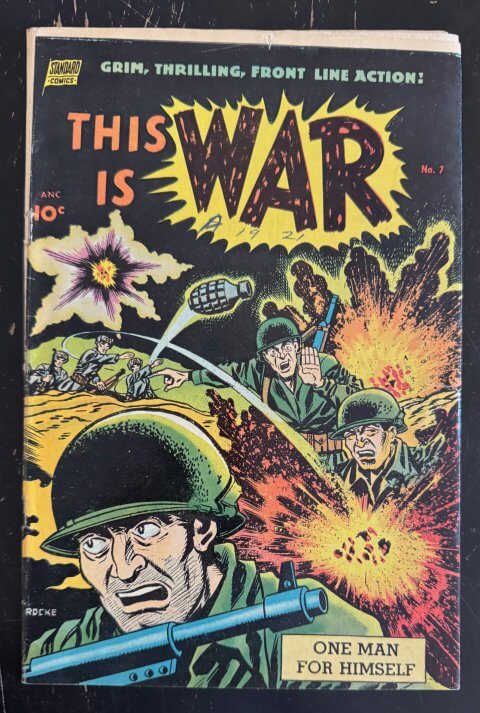
Hey, Walter. That Hit #26 is near the last of the great early issues of that particular Quality title. I thought Kid Eternity started off with some big promise, but unfortunately, it went downhill fast. The Kid Eternity comic also had an occasional flash of interest, but his stories in both Hit and KE suffered from having second rate artwork. The wartime draft and enlistment was culling many of the best artists around the time of Hit #26 on, that would be around 1943…When the good Quality artists came home after the war, like Al Bryant or Reed Crandall, they went back to doing their better-selling titles Blackhawk, Feature, Smash (Midnight) and Dollman; Kid Eternity never got a grade A artist again.
About those distribution days…it was mutual on handling books like Cutey Bunny. Back when there were just a few distributors, publishers would keep us informed of their latest releases. But sometimes I’d just find them at a convention and take a bunch of copies home with me, starting a new relationship with another young publisher. That was what happend a lot back in the early 1970s when independent comics were just getting started and fanzines were getting more professional by leaps and bounds. Eventually San Diego Comic-Con became the place to showcase new releases, but back in the day new fanzines would appear at Seuling’s NY show, or the shows in Chicago, Oklahoma City, Dallas and Houston, whatever show the publisher or the self-published creator was close to.
Cerebus and Elfquest will always be the very pinnacle of the early independent comics. I used to handle 1600 each issue on a Cerebus; no idea on Elfquest but it was a lot also, 800 or 1000, for both my retail and wholesale sales. Star Reach from Mike Friedrich was right down the road from here, Mike lived near Berkeley, so we had a close relationship on all his various titles like Quack. Pudge Girl Blimp, and such. Michael Gilbert got his start in independents like New Paltz Comics, I believe, sort of a hybrid comic/fanzine. People saw my ads in Comics Buyer’s Guide or they saw my catalogs and they would know I was a eager partner to handle their books. If they didn’t contact me, I might see an ad they ran and contact them. It still operates that way for me, when a new publisher comes along.
If you turn up an early copy of Metal Hurlant, the french comics magazine started by Moebius, Jean-Claude Dionnet et al, you’ll find me listed as the U.S. distributor for several early issues. Of course Hurlant spawned Heavy Metal and by the time it came along, I was no longer the only game in town but happily handling it from the first issue on.
I never advocated “exclusive” deals; occasionally someone might offer me one, mostly on small specialty items. But I felt it was in every publisher’s interest to get as many distributors working for them as possible, so I didn’t seek such deals out. I was happy to do my bit along with other distributors as they came along. At first it was only Seuling and I in the early to mid-1970s; Last Gasp was also there but mostly doing Underground Comics but they also edged into independents and fanzines. A couple other early outfits came and went, such as the Donohoe Brothers in Detroit, and another outfit who handled the first issue of Elfquest which was disasterous from Wendy and Richard. They offered Elfquest to me but I had my hands full at the time (smart move, huh?) and turned it down. They self-published and the rest is history. I did them a favor by not holding them down with an exclusive deal. They had all the time in the world to promote Elfquest, and the smarts to do it well, while my time was divided up handling hundreds of different titles. I could not have given it the appropriate attention it needed. Publishing and distribution don’t mix very well—it drove Pacific Comics to bankruptcy, as just one example. Even Diamond, aside from the Priceguide and their toy line, has had serious problems doing things like the EC Archives…
But after the Irjax lawsuit broke Phil Seuling’s (Seagate’s) monopoly on handling DC and Marvel Comics, people like the ones in Cutey Bunny came along…Titan (in England), Glenwood (who started air freighting comics), and of course Capital City, in the late 70s into the early 80s.
I’d resisted getting into distributing Marvel and DC for several years—my Comics & Comix stores bought our books from Seagate as well as the local ID distributor. But my partner in C&LC John Barrett was always after me to expand and I finally gave in around 1981-1982. A small bay area distributor, Charles Abar, decided to stop handling comics and stick to just cards and supplies. He hand-picked me to take over his new comics distribution in northern California. So I finally added newstand comics to my other things I handled. And then expanded very quickly as Capital opened a warehouse in San Francisco and I had to also to stay competitive. Two years later in 1984, Pacific Comics folded up and gave me their customers, in exchange for what they could not pay me on for their DC’s they bought from me. Alternate Realities did exactly the same thing in 1987, trading me their ongoing accounts for a debt they could not pay. I ended up with warehouses in St. Louis, Denver, San Francisco, LA, San Diego and Phoenix. But my heart was always with the independent books and comics and fanzines, not so much with newstand comics, so it was a huge relief to sell the whole mess to Diamond Comics in July 1988 and go back to straight retailing and spending time with the books again.
Back when you could sell back issues of much of the independent stuff, I was able to buy up a good bit of Pacific Comics inventory when they went under in ‘84, and Alternate Realities in ‘87, and then Blackthorne (Steve Schanes’ company after Pacific) and Eclipse when Cat and Dean split up. When Kitchen Sink went under in the mid-1990s, I bought many, many pallets of material from them at fire sale prices also.
Hey Bud, how did your Cerebus sales do over the run of the title? My friend Harry Kremer (Now and Then) bought tons of them every month, and helped Dave get the title of the ground. He was one of the distributors for quite some time, but, when my friend Dave Kostis took over the store after Harry passed away twenty years ago, there were still thousands of them stored in the back room. Dave ended up sending most of them to the dump when the store folded. And, a few years ago, Dave Sim was literally giving away copies of Cerebus Weekly. I believe, at the height of it’s popularity Cerebus, was selling around 34,000 copies per issue, but, sadly, there was quite a slump after some of Dave’s views on women were expressed in his editor’s comments. I can’t imagine that the seemingly endless Cerebus in Hell, which consists of basically collage with little Cerebus figures dropped in, could sell more than a few thousand at best. He is certainly a pioneer in the self-publishing field though!
Mel, The 1600 copies per issue figure I mentioned dates back to Cerebus in the early numbers, back before #25 or 30 or so. I have no memory of how things changed with time, but as more distributors came on board, I’m sure my sales as well as my orders dropped down, even while Cerebus became more popular. But in those early days, Dave might have only been printing 5000 copies of each issue. Typical underground comics, from which b&w independents sprung, were printed mostly in the 10,000 to 20,000 copy range, but it was still economical to do 5000 or less of a b&w independent title, which is the range in which many got their start.
The first issue of Teenage Mutants was either 1000 or 3000, I’m sure that is documented somewhere. My purchasing manager at the time talked Eastman and Laird into letting us handle #1; their original plan was to sell the entire run themselves at conventions. First editions of #1 still turn up around here in Grass Valley, from my ex-employees who were reading it! Kevin Eastman became a good friend over the years and we handled a great many of his projects, from ill-fated Tundra company to Heavy Metal when he took that over.
Talk about success stories. Cerebus never broke out of fandom, as popular as it was. But Elfquest and Bone, those made it out into great success in the real world of books and bookstores, way, way limited distribution in just comic shops.
I was out of distribution long before Cerebus #300 came out, and as a mail-order retaiiler by then, I was no longer handling comics like Cerebus. I couldn’t make money selling $2 or $3 items in my print catalogs, pre-internet days, so I mostly stuck to zines and books with a higher price point. That’s still true today; once in a while I like to handle a $3.99 or $5.99 replica or facsimile edition from Marvel or DC, but I try and make them into sets to get the price point up to at least $10. Mostly I stick to the archives and omnibus collections.
I handled all of the Cerebus big fat paperback collections as they came out, but eventually sales petered out and I dropped them, just as the same happens to most books over time. Elfquest would be in the same category, after handling the individual comics I handled the book collections for many years, but all things must pass. I never handled Cerebus in Hell or any of Dave’s later efforts, aside from his recent book on recent book The Strange Death of Alex Raymond. I found that pretty interesting and I enjoyed reading it. I’ve heard he cannot draw due to a health issue? This may explain why he is doing so much reproduction work from Gustave Dore (Cerebus in Hell) and Alex Raymond and John Prentice and other artists (Glamourpuss and Strange Death of Alex Raymond). But again, his exploring the “photo-realistic” artists of the 1950s in the Glamourpuss series I found entertaining and I tried to keep up with it for some time, just personally buying them to read and enjoy the artwork.
When Deni Sim left Dave in 1984 and formed Renegade Press (1984-89), she went back to being Deni Loubert and those years were the heyday of b&w independent comics. I liked Deni a lot and I did well with most titles she handled, like Neil the Horse, Flaming Carrott, Ms. Tree, Wordsmith on. I’d try and keep all the back issues in stock. Deni published more out of love for a project than looking for bombshell best sellers. But of course that mostly went bust with the b&w glut which began pre 1988 when I was still a distributor as well as a retailer. I really supported the the movement but like everyone else, I also got stuck with LOTS of bad black & white titles. After I left distribution, I was only handling book collections when and if those comics were compiled.
I wish I had more numbers for you.
Dave Sim’s initial reaction to Wordsmith, when Daver Darrigo and that R.G. Taylor guy first presented their samples, was that it looked like “rushed Al Williamson.” But, when Deni split with Dave it seemed to be one of the first concepts she jumped on for her new Renegade line. If you check out Wordsmith #5, 7 and 10, you can actually catch me in my role as Clay’s best buddy Asa Cohen, and the cab driver in #10 is none other than Harry Kremer! Rick used photo reference throughout Wordsmith and I had a big part in Kitchener rounding up subjects, so quite a few of my friends and neighbours put in an appearance, especially in Wordsmith #10, and Asa’s dear mother is played by Harry’s mother! We dragged so many people in for photo reference, especially for that particular issue, it has always been my favourite of the run.
Dave did indeed have a terrible problem with his hand and had to stop drawing for a while, but I understand he’s slowly getting it back after a long and hard recovery. Fingers crossed!
That B&W glut also managed to kill off a lot of very good material along with all the dross unfortunately!
Those sounded like very busy days Bud, its amazing you were able to juggle so much. I recognize some of those old publishers, I’ve seen copies in our warehouse. And Mel, your old Harry Kremer stories are bringing a tear to my eye, I used to love heading up to Kitchener to visit Harry.
Hey, Mel, that is fascinating about your intimacy with Wordsmith. I’ve never gone back to read any of them, but I remember that I liked the series at the time and did try to support it, that’s why it came to mind. Arn Saba’s Neil the Horse was another fun comic. I guess Ms Tree is one of the only titles to really move forward; I found it a bit stodgy but I read it regularly and so did many customers. It was a good straight-forward adventure comic with some pin up art thrown in; the series of course is back now and I’m handling it again, 30 years later.
Very happy to hear Dave’s hand is coming along. That must be so difficult.
I’d heard of Harry Kremer but unless I bumped into him in NY at the shows, I don’t think I ever met. I did get to Toronto once and visited with Silver Snail, they were good friends and we used to stay together with Ron & his wife at Phil Seuling house in Seagate (iSeagate is also a place in Brooklyn, as well as the name of his business) together before and after the NY comic shows. George Henderson came down once with a contingent for the show and I remember a huge dinner we all went to together with Phil; Phil loved going out to eat with friends and was usually the center of attention, as outgoing as he was. I think George was also.
I carried all of George’s early publications, Captain George’s Comic World (1970-85) those newsprint collections like Silver Starr by Stanley Pitt and whatever his latest interest was. He was often the first to collect a lot of offbeat early comics stuff, albet in b&w. Here’s two links to them on MyComicShop.
https://d1466nnw0ex81e.cloudfront.net/n_iv/600/1114513.jpg
https://www.mycomicshop.com/search?TID=581611
bud
George Henderson was another great character, who apparently had no regard whatsoever for the notion of “copyright.” I believe it was a cease and desist order of some kind which finally put the kibosh on his blatant rip off some classic work. I was only in Memory Lane a handful of times, and he seemed chameleon like in his moods, one minute delighted and the next grumpy as hell, but his grumpy was actually pretty funny. I bought the Galactus trilogy from him when it was only about three years old and they already cost a whopping three bucks! I think it may have been the first time I ever realized that comics were potentially a very profitable collectable. There weren’t really any other comic specialty shops that I knew of at the time, so this was quite the revelation!
And, Bud, I wish you could have been around to see some of those photo shoots for Wordsmith. I’m sure we confused the hell out of a lot of bystanders! I think Mrs, Kremer thought we were all bonkers, but she joined right in enthusiasticllay when we needed her. I think it may have been Harry’s only appearance in a comic book (someone correct me if I’m wrong).
Neil the Horse was a wonderful bit of whimsy that I think a lot of people just didn’t quite get. Such a shame because the artwork was quite different and vastly entertaining. I think though that my favourite Renegade title (after Wordsmith, of course) was French Ice with the adventures of Carmen Cru. I wish I could find copies of those today! Deni really branched out into some interesting genres at Renegade. Where are they all now, I wonder?
By the way Bud, I forgot to mention that you can get an eyefull of Neil the Horse cartoons and merchandise in Bob MacMillan’s Encyclopedia of Canadian Animation, Cartooning and Illustration (canadianaci.ca), and, while you’re there, you can even find out more about those Taylor boys, R.G. and Mel! I also forgot to mention that, since about 1982, Arn Saba has identified as Katherine Collins, so don’t go looking for “Arn Saba” in the encyclopedia.
cheers, mel
Thanks Mel, I’ll look into the site.
Yeah, I think Katherine Collins was po’ed at me once for using Arn Saba after the name change. I didn’t mean any offence, but it’s hard in the beginning to start using “new” names (a la Jeffrey Catherine Jones) after years of the original being implanted in your psyche. And it is hard to explain to my customers that the person known as Arn Saba is suddenly known by an entirely different name. Those old Neal the Horse comics will always have Arn’s name on the cover, you can’t rewrite history.
Jeff (Jones) can’t get mad at me now, but he/she will always be Jeff Jones in my world. I collected his/her paperback covers and all other work from the very beginning in the sixties, for more than 30 years, before the change. All those paperbacks and Idyll and all, they are signed Jeff Jones or just Jones.
Now, Barry Windsor-Smith, somehow that name change (ok, now we are talking name change, not sex change), that was easier to get used to from Barry Smith; Barry changed his name very early in his career. All his beyond-comics fine art work, which was a huge part of my business, all those beautiful prints in part inspired by Pre-Raphaelite style, that was under the BWS name. So now Barry Smith seems odd to me, I would not use it at all. I think Windsor-Smith fits him much better.
Barry Windsor-Smith, Jeffrey Jones, Michael William Kaluta and Bernie Wrightson were the magical talents who heralded the end of the Silver Age and something entirely new and wonderful to me. I would probably also throw Neal Adams and Jim Steranko into that mix, but the arrival of a book like The Studio in the ’70s really laid the groundwork for the inclusion of comic art in gallery showings and more.These guys were the modern masters of the time, and we always, thankfully, seem to get a whole new crop of geniuses every few years in this medium. Let’s hope that never changes!